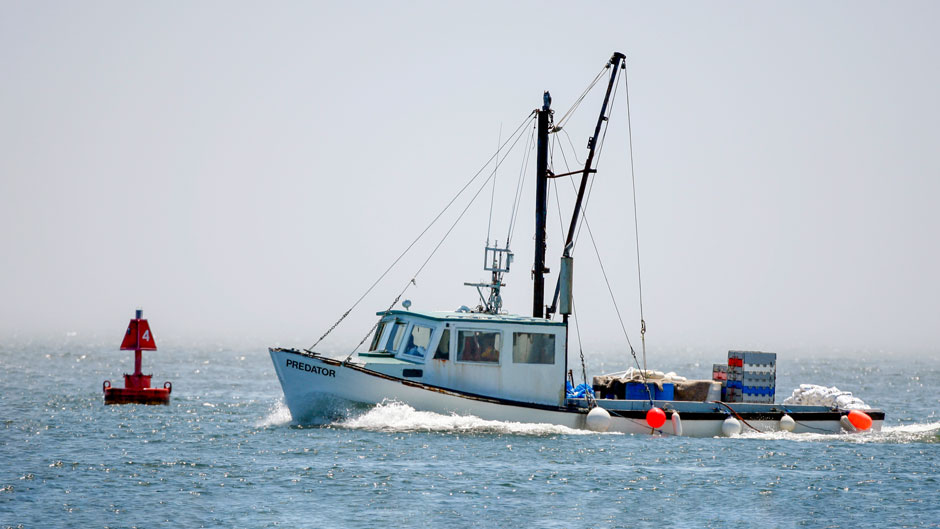With its bulging eyes and relatively unimpressive shape, the Peruvian anchoveta probably wouldn’t win any beauty contests for marine life. In the category of fisheries, however, the small aquatic creature is unbeatable, reproducing at a remarkable rate and yielding catches larger than any other single wild fish species in the world.
But what if the anchoveta spawned at a much slower rate, and commercial fishermen from Chile and Peru—where the species is most abundant—crossed each other’s exclusive economic zones to augment their hauls and help fill their nets?
The pelagic schooling fish would most likely see its numbers decline, and some sort of fishing agreement would have to be forged between the two South American countries.
Traditional international fisheries management accords rarely work as planned, though, as they often include unusual incentives and loopholes that threaten the sustainability of stocks.
Now, a University of Miami researcher and his colleague have demonstrated how implementing a so-called transboundary marine protected area (TMPA) can be a plausible alternative to conventional agreements to manage certain fish species.
“It’s based on eliminating the factors that lead to non-cooperation in the first place,” said Renato Molina, an assistant professor of environmental science and policy at the University of Miami’s Rosenstiel School of Marine and Atmospheric Science and Miami Herbert Business School.
“Whenever there are species distributed across multiple jurisdictions, countries, states, and communities tend to exploit them harder than they otherwise would, and this is especially true with fish. When fisheries are spread across territories, the odds that they’ll be overexploited are higher. And, consequently, they’ll end up being in worse shape sustainability-wise than those contained in a single jurisdiction,” Molina explained.
A well-designed conservation agreement in the form of a TMPA would allow two resource owners, rather than a third party, to jointly decide just how much of their own jurisdiction to protect from overfishing, with stiff economic penalties imposed should those limits be exceeded, according to Molina.
“We’ve discovered that well-conceived TMPA agreements have the potential to completely overcome noncooperation incentives across jointly owned fisheries,” Molina said. “It can actually result in higher harvest benefits and increased stocks for both owners. An agreement of this kind is most effective when the fish stock is highly susceptible overexploitation.”
Molina recently published his research on TMPAs in the journal Resource and Energy Economics. He is co-author on the study with Christopher Costello, a professor of environmental and resource economics at the Bren School of Environmental Science and Management at the University of California, Santa Barbara.
In their study, the two researchers employed game theory to demonstrate how owners, when faced with limited fish stocks, react to the efforts of other owners who are fishing the same stock. “They attempt to ‘outfish’ one another before those stocks are depleted,” Molina said.
“Because someone shares a resource, they have an incentive to react strategically to another’s actions,” Molina added. “For instance, if a country decides that it will fish all that it can, the other country sharing a resource has an incentive to react in the same manner. So, it becomes a case of, ‘I’m going to fish it down first.’ We used game theory to explore this sort of strategic interaction, and we found that this overfishing scenario holds true not only when fishing agents are trying to strike a fisheries agreement but also when they try to implement regulations on their own.”
But by fisheries owners willingly agreeing to establish a TMPA, such behavior can be prevented, Molina noted. “Even if owners only care about themselves, they will still agree to jointly protect their waters,” he stressed. “This is a strong and economically sound case for multilateral conservation.”
He is anxious to see his research tested in the real world. In the case of Chile and Peru, Molina and Costello’s theory probably wouldn’t be appropriate, as anchoveta are abundant and produce substantial commercial fishing hauls. “But take certain species like slow-growing groupers that are shared between coastal and island nations,” Molina pointed out. “Those could serve as good examples to test our theory because they don’t migrate long distances and are very susceptible to overexploitation.”
Molina stated that, in addition to the anchoveta shared by Chile and Peru, other prominent examples of transboundary fisheries include the halibut shared by the U.S. and Canada, the Arcto-Norwegian cod fishery shared between Norway and Russia, and the snapper fishery shared by Indonesia and Australia.
He also indicated that transboundary marine protected areas between neighboring countries will likely become increasingly vital to protect species forced to migrate because of climate change.

